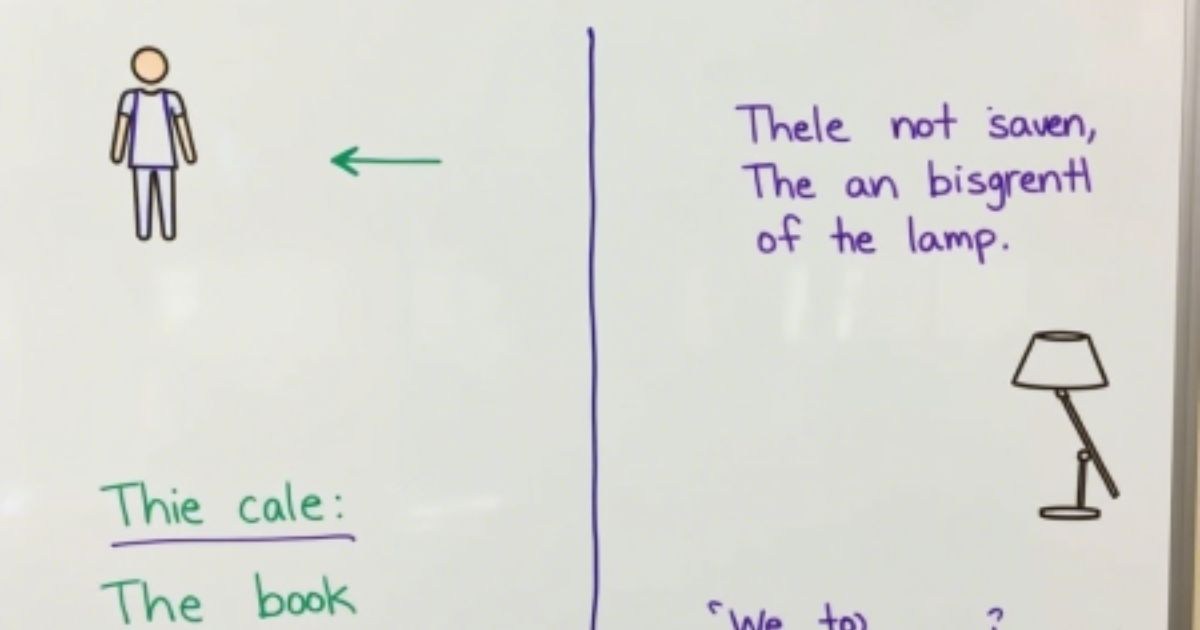When it comes to “Infront or In Front,” there’s often confusion between the two forms. Many people wonder, “Is in front one word?” The simple answer is no. “Infront” is not a valid word in English. The correct form is always “in front”. You’ll see “in front” used to describe something being ahead or positioned before something else. So, the next time you’re unsure about “Infront or In Front,” just remember to use the two-word form: “in front.”
Some may ask, “Is infront a word?” Again, no, “infront” is a common misspelling. The right way to write it is “in front.” To make sure you’re spelling it correctly, always check if you’re using “in front” as two separate words. Whether you’re saying Infront or In Front of something or wondering “how do you spell in front,” using the correct form is key to clear communication.
Which one is correct? Infront or In Front?q
The correct phrase is “in front.” “Infront” is a common misspelling. You should always use “in front” when referring to something being positioned ahead of something else. For example, “She stood in front of the door.”
The phrase “in front” is often used to describe the position of something relative to another object. It’s important to remember that “in front” should always be written as two separate words, not as a single word like “infront.” Here are a few key points about Infront or In Front to keep in mind:
- When you say “in front,” it’s best to put a space between the word “in” and the word “front.”
- “Infront” is a common misspelling, and it’s not considered grammatically correct.
- Use “in front” when referring to something positioned ahead of something else.
- For example, “She stood in front of the door” is the correct usage.
- Always remember to keep “in front” as two separate words in formal and informal writing.
Common Mistakes
When using the phrase “in front,” there are a few common mistakes people often make. These mistakes can lead to confusion or improper grammar. It’s important to use the correct spacing, phrasing, and placement in sentences. Here are some common errors about Infront or In Front:
Examples:
- Using “infront” instead of “in front”
- Incorrect: She stood infront of the door.
- Correct: She stood in front of the door.
- Incorrect: She stood infront of the door.
- Omitting “in front” when it’s needed for clarity
- Incorrect: She placed the book on the table and then sat in front.
- Correct: She placed the book on the table and then sat in front of it.
- Incorrect: She placed the book on the table and then sat in front.
- Misusing “in front” to describe something that isn’t ahead
- Incorrect: He’s standing in front of me, and I can’t see the TV.
- Correct: He’s sitting in front of me, and I can’t see the TV.
- Incorrect: He’s standing in front of me, and I can’t see the TV.
By avoiding these mistakes, you can use “in front” correctly and improve the clarity of your writing.
Definition of “Infront”
When it comes to “infront or in front,” the correct choice is always “in front.” The word “infront” is a common misspelling and is not recognized in standard English.
People often wonder, “Is “in front” one word?” The answer is no, “in front” should always be written as two separate words. “Infront” is incorrect and should be avoided.
So, “is infront a word?” The answer is no. “Infront” is not a word. To spell it correctly, simply use “in front” as two separate words for clarity and accuracy.
30 sentences using the word “in front”
Here are 30 sentences using the phrase Infront or In Front in different contexts. The term is often used to describe the position of something or someone relative to another object or person. It helps convey direction, placement, or location in everyday language:
- The car parked in front of my house blocked the driveway.
- She stood in front of the mirror, adjusting her dress.
- The teacher is in front of the classroom explaining the lesson.
- I saw a dog running in front of the park.
- The line of people waiting for tickets was in front of the theater.
- He sat in front of the computer for hours working on his project.
- The children played in front of the school after classes ended.
- The bus stopped in front of the store, and people got off.
- My office is located in front of the elevator.
- The flag was raised in front of the government building.
- They built a beautiful garden in front of the house.
- I have a good view of the ocean in front of the hotel.
- The monument stands in front of the city hall.
- The cat is sitting in front of the window, watching the birds.
- She waited in front of the door, hoping for a sign.
- The soldiers marched in front of the president during the ceremony.
- There’s a coffee shop in front of my office.
- He was standing in front of the door, blocking the entrance.
- The children waited in front of the school gates for their parents.
- The bus station is located in front of the shopping mall.
- I saw her walking in front of the museum yesterday.
- The car behind us was too close, driving in front of our bumper.
- The podium was placed in front of the audience for the speech.
- He placed the box in front of the door so it would be noticed.
- The dog was barking loudly in front of the house at midnight.
- The teacher called on students in front of the class to answer questions.
- I parked in front of the restaurant to pick up the takeout order.
- The waiter stood in front of the table, waiting for us to decide.
- The family gathered in front of the fireplace to open presents.
- The statue of the founder stands tall in front of the university entrance.
These sentences highlight how the phrase “in front” can describe physical positioning, direction, and placement in various situations.
Examples of “in front”
- “Please stand in front of the line.”
This means the person should be positioned ahead of the line, facing it.
- “The children were sitting in front of the television.”
This suggests the children were located ahead of the TV, facing it directly.
It’s important to point out that “infront” isn’t a valid word in English according to reputable dictionaries or grammar references.
For clear communication, always use “in front” instead of “infront”.
To wrap it up, fromInfront or In Front the “in front” is the correct way to describe something or someone being positioned ahead of or facing another object or person. “Infront” is simply a mistake, so it’s best to avoid it to ensure your message is understood.
Things you need to know about “in front”
When it comes to the question of “Infront or In Front,” the correct form is always “in front.” The phrase “in front” consists of two separate words and is used to describe the position of something or someone ahead of another object or person. For example, “The car is in front of the house.”
A common confusion arises with the incorrect spelling in Infront or In Front. Many people wonder, “is in front one word?” The answer is no , “in front” should always be two words. “Is infront a word?” No, it is not recognized in standard English. It’s simply a mistake and should be avoided.
If you ever ask “how do you spell in front,” the answer is simple: always use “in front” as two separate words. This ensures clarity and proper grammar in your communication.
Must Read This Blog….Ring In The New Year With One Of These Sparkling Brilliant Party Themes
20 points about using Infront or In Front
- The proper way to write it is “in front” as two separate words.
- “Infront” is a common misspelling and should be avoided.
- “In front” is used to indicate that something or someone is ahead of or facing another object or person.
- “Infront” is not a recognized word in the dictionary.
- Always use “in front” when referring to something ahead of or facing something else.
- “In front” can describe physical locations, like “The car is in front of the building.”
- Use “in front” when specifying direction or location, such as “She is standing in front of the stage.”
- “In front” is never one word , it is always two words.
- People often mistakenly combine the two words into one (“infront”), which is incorrect.
- If you use “infront” in writing, it can confuse the reader since it’s not grammatically correct.
- The two-word form, “in front,” is the correct expression in standard English grammar.
- Examples include “The podium is in front of the audience,” and “The bus is in front of the station.”
- “In front” is the opposite of “behind” in terms of position or direction.
- It’s often used in relation to spatial positioning, for example, “Stand in front of the door.”
- If you’re writing, always use “in front” as two words to ensure clarity and correctness.
- When speaking or presenting, use “in front” to explain where something or someone is positioned relative to you.
- “In front” can be used in both formal and informal contexts without issue.
- Avoid using “infront” in both written and spoken communication, as it is not a valid word.
- People often ask “how do you spell in front?” The answer is simple , “in front” as two separate words.
- If you’re ever unsure, remember that “in front” is always the right choice, not “infront.”
Definition of “In Front”
Infront or In Front is a commonly used phrase to describe something or someone that is positioned ahead of or facing another object or person. It’s often used when giving directions or describing the relative location of one object to another. For instance, “The car is in front of the house” means the car is located ahead of or facing the house.
In addition to physical positioning, “in front” can also be used to describe direction. For example, “She is standing in front of the stage” means that she is positioned ahead of the stage, facing it. It can apply to many situations, whether it’s describing where someone is standing, sitting, or moving.
It’s important to remember that “in front” is always written as two separate words. Many people mistakenly write it as “infront,” but this is incorrect. “Infront” is not recognized in proper English usage and should be avoided. Always use “in front” for clarity and correctness.
Example of how “in front” can be used in sentences
“The dog is sitting in front of the door, waiting for its owner.”
– This sentence shows that the dog is positioned ahead of the door, directly facing it or close to it, indicating its specific location.
The phrase Infront or In Front the“in front” refers to something being ahead of or positioned before another object or person. It is commonly used to describe the spatial arrangement between two things, indicating one is facing or leading another.
For example, if someone is standing in front of a crowd, it means they are ahead of the others, often in a more visible or prominent position. Similarly, when you say “the car is in front of the house,” it implies that the car is located before the house or facing it. Understanding how to properly use “in front” helps you communicate more clearly and effectively, whether you’re giving directions, describing locations, or explaining positions.
Proper Usage of “in front”
How you use “in front” versus “infront” can significantly impact how well you communicate, whether in writing or speaking.
- “In front” is the correct and widely accepted way to describe the position of something or someone that is ahead of or facing something else. “Infront,” however, is an incorrect form and not recognized in proper English grammar. Understanding when to use “in front” correctly will help you convey your message more clearly, without any confusion.
The phrase “in front” is all about indicating location or position in relation to something else. It’s used to show that one thing is ahead of or positioned before another. For instance, “The dog is in front of the door,” shows where the dog is relative to the door, meaning it’s positioned ahead of or before the door.
You can use “in front” to describe where things are located or where they are positioned. For example, “Please stand in front of the room,” or “He stood in front of the crowd,” both show a person in a leading or prominent position. “In front” helps clarify the relative positioning of one object or person to another, whether in terms of space or hierarchy.
It’s important to remember that Infront or In Front doesn’t exist in standard English. Even though some people might use it casually in conversation, it’s not considered correct, especially in professional or formal contexts. Stick to using “in front” to ensure your communication is clear and grammatically sound.
To show the correct usage, let’s look at some common examples:
“To show the correct usage, let’s look at some examples:”
“She stood in front of the crowd.”
– Correct: This sentence uses “in front” to properly describe the person’s position, ahead of the crowd.
“She stood infront of the crowd.”
– Incorrect: This is a mistake. “Infront” is not a valid word, and using it here is grammatically wrong.
In the first example, “in front” is used to describe the position, meaning the person is ahead of or facing the crowd. It helps give clarity about where someone is in relation to another object or group. The second example, however, uses “infront,” which is simply a misspelling and doesn’t follow proper English rules.
It’s crucial to point out that the difference between Infront or In Front goes beyond just these examples. This distinction highlights the importance of using standard grammar and spelling when communicating, both in writing and speaking.
The correct phrase is “in front,” and using this form helps ensure your communication is accurate and professional. “Infront” isn’t just incorrect, it’s a mistake that can confuse the listener or reader. If you want to come across as polished and clear, stick to “in front” in all situations.
When you use from Infront or In Front, you’re not just getting the spelling right; you’re also following proper language rules, making your communication clearer and more effective. So, whether you’re speaking casually or writing formally, always choose “in front” to express the idea of something being ahead or facing another object.
The Difference Between “Infront” and “In Front”
The main difference between “Infront or In Front” lies in their structure and usage. While “in front” is the grammatically correct term used to indicate that something is positioned ahead of or before something else, “infront” is simply an incorrect spelling of the phrase. It’s a common mistake that occurs when people mistakenly combine the two words into one. If you’ve ever wondered, “Is in front one word?” the answer is clear: No, it is not. “In front” is always used as two separate words. The use of “infront” could cause confusion and disrupt the clarity of your message, which is why it is important to always use the correct form, “in front.”
Moreover, “infront” isn’t recognized by any standard dictionary or formal English grammar guides. It’s crucial to remember that when you are discussing positioning or location, the correct form is always “in front.” Using “infront” can make you sound unprofessional and lead to miscommunication. So, always ensure that you use “in front” when referring to something ahead of something else, whether in writing or conversation. This simple distinction can enhance both your writing and speaking clarity.
- “In front” is always two words, never one.
- “Infront” is a non-existent term in formal English and is a common typo.
- Using the correct form ensures better communication.
Why “Infront” is Not a Recognized Word
The term “Infront” is a misspelling, and it’s important to understand why it’s not accepted in English. “Infront” is not found in standard dictionaries or grammar guides, and it doesn’t align with the established rules of the language. If you find yourself questioning, “Is infront a word?” the answer is definitively no. Instead, you should always use the two-word phrase “in front” when referring to position or location.
When you use Infront or In Front in communication, whether written or spoken, you risk appearing less professional and may even cause confusion. The term “infront” is often the result of a typographical error or an incorrect understanding of the proper phrase. For example, a sentence like “She is infront of the building” should be corrected to “She is in front of the building.” By following proper grammar and using “in front” instead of “infront,” you’ll ensure that your writing and speech remain clear and accurate.
- “Infront” is not grammatically correct or recognized in English.
- Always use “in front” for clear communication.
- Misusing “infront” may cause confusion and reduce professionalism.
The History Behind the Phrase “In Front”
In Infront or In Front, the phrase “in front” has a deep-rooted history in the English language, dating back to its use in early texts. It originated as a way to describe a position relative to another object or person. In fact, the phrase “in front” has always been composed of two distinct words: “in” and “front.” The word “front” itself is derived from the Old French term “frunt,” which means a position that is forward or ahead. Over time, “in front” became the standard expression to indicate that something is ahead of or before another object.
The formation of “in front” made the phrase easier to understand and more specific in terms of direction and location. However, despite its long history, the term “infront” has never been accepted as a legitimate word in the English language. The confusion that led to the creation of “infront” is a modern phenomenon, often arising from informal speech or typographical errors.
Despite these occasional mistakes, the proper usage of the phrase has remained consistent throughout history. So, when you ask, “Is in front one word?” the correct answer is no, and this has been the case since the early days of the English language.
- The phrase “in front” has always been two words.
- “Infront” has never been a legitimate English word.
- There is no historical precedent for “infront.”
Is “Infront” a Typo or an Actual Mistake?
“Infront” is indeed a typo, a common error when someone incorrectly combines the words “in” and “front.” While it may seem harmless, “infront” is never acceptable in proper grammar. If you find yourself asking, “Is infront a word?” the answer is simple, no, it’s not.
Using “infront” in writing or speech will lead to confusion, and most people will quickly notice the mistake. If you want your communication to be clear, whether in formal or informal settings, it’s important to stick with the grammatically correct form: “in front.” The question “How do you spell in front?” should be answered by saying two distinct words, “in” and “front.”
- “Infront” is simply a typographical mistake.
- It is not a valid English word.
- Always use “in front” to avoid confusion.
By consistently using “in front” instead of “infront,” you’ll avoid common spelling errors and ensure your communication is professional, clear, and grammatically correct.
Clarifying the Meaning of “In Front” in Different Contexts
The phrase “in front” is used in multiple contexts to describe placement or position relative to something else. It can refer to physical location, as in “The bus stopped in front of the school.” It can also describe someone or something being in a prominent position, such as “She is in front of the line.”
The phrase is versatile, and its use is widespread in both casual and formal situations. When you ask, “How do you spell in front?” the answer is always to write it as two words, “in front.” Using “infront” would make your sentence grammatically incorrect and may lead to misunderstandings.
- “In front” describes a position ahead of or before something.
- It’s widely used to indicate location, prominence, or rank.
- Never combine “in front” into “infront” for proper communication.
By understanding the distinction between “infront or in front,” you can avoid common mistakes and improve your written and spoken English. Whether you’re asking “Is in front one word?” or wondering “Is infront a word?” the answer is clear: always use “in front” to communicate correctly and effectively.
Common Confusions Between “Infront” and “In Front”
One of the most common confusions between “infront” and “in front” comes from people who mistakenly combine the two words into one. Many mistakenly believe that “infront” is a valid term, but it’s actually an incorrect form. The correct expression is always “in front,” as it is used to describe the position of something relative to another object or person.
A common question that arises is “Is infront a word?” The answer is no. “Infront” is not recognized in formal or academic writing. It’s simply a common misspelling of “in front.” People may casually slip into using “infront” in informal speech or writing, but this is not acceptable when it comes to proper grammar. To ensure clarity and precision in communication, it is crucial to use the correct two-word form, “in front.”
- “Infront” is an incorrect, nonstandard term; use “in front.”
- Mistakes occur due to the combination of two words into one.
- Consistent use of “in front” promotes clear and precise communication.
How “In Front” Enhances Clarity in Writing
The phrase Infront or In Front plays a vital role in enhancing the clarity of your writing. It directly refers to the position of something or someone being ahead of another item or person. Using “in front” is a straightforward and accurate way to express relative positioning. On the other hand, the term “infront” creates confusion as it is not a real word, leading to potential misunderstandings.
In writing, clarity is key, and “in front” is the proper way to express the idea of something being located ahead of or before something else. When you use “in front” instead of “infront,” you eliminate ambiguity and ensure that your reader immediately understands your meaning. Whether it’s for descriptive writing or professional communication, proper grammar enhances your message’s impact and professionalism.
- “In front” is a precise and clear way to describe position.
- It ensures clarity, making your message easier to understand.
- Using “in front” is essential for professional and effective writing.
Alternative Phrases to Use Instead of “In Front”
In Infront or In Front, while “in front” is the most widely used and universally understood phrase, there are alternative expressions you can use depending on the context and desired tone. For example, instead of saying, “She is in front of the line,” you could say “She is ahead of the line” or “She is at the front of the line.” These alternatives can be effective in making your writing sound more varied and dynamic.
Other phrases, such as “before,” “at the head of,” or “leading,” can also replace “in front” in certain situations. While “in front” is the most standard and formal phrase, these alternatives offer variety in more creative or casual writing. However, no matter the alternative, “in front” remains the simplest and clearest way to express someone or something’s position relative to others.
- Use alternatives like “ahead of,” “before,” or “leading” in different contexts.
- These alternatives provide variation, making writing more engaging.
- “In front” is still the most clear and universally accepted phrase.
Can You Ever Use “Infront” in Casual Conversation?
Though you might hear Infront or In Front used in casual conversation or informal settings, it is important to recognize that this is a misspelling. The correct form is “in front,” and even in casual discussions, it’s best to stick to the proper grammar. While language is often flexible in informal speech, using “in front” ensures that your communication remains clear and professional.
It’s common for people to mix up spelling in fast conversations or relaxed writing, but adhering to proper grammar, especially when it comes to expressions like “in front” versus “infront”, is important. Using Infront or In Front is not only grammatically correct but also helps avoid confusion. Whether you are writing an email, giving a presentation, or speaking casually, using the right phrase will ensure clarity and prevent misunderstandings.
FAQ’s
What is the correct way to write “in front”?
The correct form is Infront or In Front. Always use it as two separate words for clarity and accuracy in writing.
Is “infront” a valid word?
No, Infront or In Front is not a valid word. Stick to the proper form to avoid confusion and maintain proper grammar.
How do I spell “in front” correctly?
To spell it correctly, always use Infront or In Front as two words. This ensures that your writing follows standard English rules.
What does “in front” mean?
Infront or In Front means being ahead or facing toward something. It helps explain the position of something relative to another object.
Can I use “infront” in formal writing?
No, Infront or In Front should be used instead of infront. Using the correct form ensures clear communication in professional writing.
Conclusion
To wrap things up, when deciding between “Infront or In Front,” the answer is clear: always choose “in front.” “Infront” is a common mistake and is not a proper word in English. The correct spelling is “in front”, and this should always be your go-to choice. If you’re wondering “is in front one word?”, the answer is no, “in front” must always be two words.
You might also ask, “is infront a word?” Unfortunately, no, it’s not. To avoid confusion, remember to spell it correctly as “in front.” Whether you’re writing or speaking, always use the correct form: “in front.” So, next time you’re unsure about “infront or in front,” simply ask yourself how to spell “in front,” and you’ll be all set!











